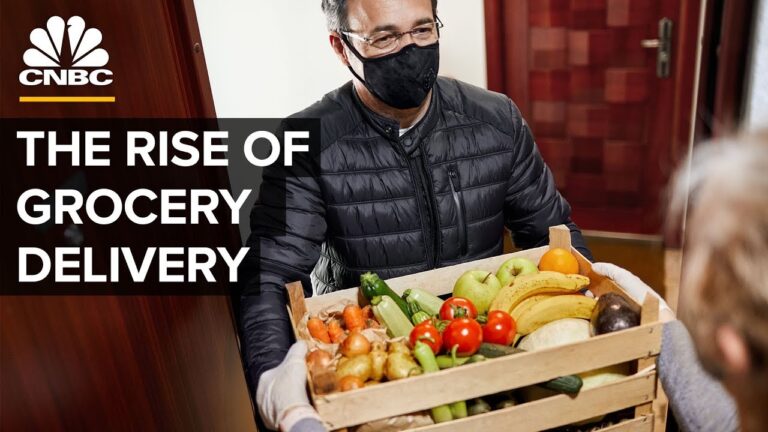Learn How the Rise of Grocery Delivery is Transforming the Retail Landscape
Based on this CNBC Report & Story, following facts have come to light.
Online grocery delivery is seeing exceptional growth amid the coronavirus. Over the last few weeks, Instacart has seen customer order volume increase more than 500% year-over-year. But after the coronavirus, will demand for these online services stick?
Thousands of small businesses have closed due to the coronavirus outbreak in the United States. But one sector that’s seen exceptional growth is online grocery delivery. A recent survey by RBC Capital Markets in March found that 55% of respondents had purchased groceries online, up from just 36% in 2018 and 15% in 2015 .
Online grocery delivery service Instacart told CNBC that demand over the last few weeks has been the highest in the company’s history and that customer order volume is up more than 500% year-over-year. Once a luxury, the coronavirus pandemic has transformed grocery delivery services like Instacart and Amazon Fresh into essential seemingly overnight.
But whether or not grocery delivery will become mainstream in the long run will depend on how they perform now.
This has been a major potential customer acquisition opportunity for the Instacarts of the world, the Amazon Freshes of the world. All consumers are turning towards them to try them out. “They’ll have some patience for a service that isn’t a hundred percent.
I think people will be somewhat realistic about that. But if in a month or two, if Instacart and Amazon Fresh aren’t able to get their act together, you’re going to have a lot of people who’ll have tried to service, found it wanting and will go right back to the grocery stores.
Mark Mahaney, managing director at RBC
Learn how Millions of Grocery Items are delivered to Homes Every Week
Based on this Business Insider Report, Each week, e-grocer FreshDirect delivers 100,000 grocery orders direct to customers’ doors. It all happens from its Bronx warehouse, the size of 11 football fields.
Using an advanced AI system, temperature controls, nine miles of conveyor belt, and a fleet of delivery trucks, the company is able to cut out three steps in the normal grocery store supply chain. Business Insider visited the warehouse to see how the company moves 3 million grocery items a week in the face of unprecedented pandemic demand.
View, Read and Learn more here:
- Ecommerce
- Technology
- Artificial Intelligence
- Marketing Mix
- Business Learning Videos & Case Studies
- Retail Failure Stories
- Startup Failure Stories
- Travel Food Culture
- Retail Articles
- Customer Articles


